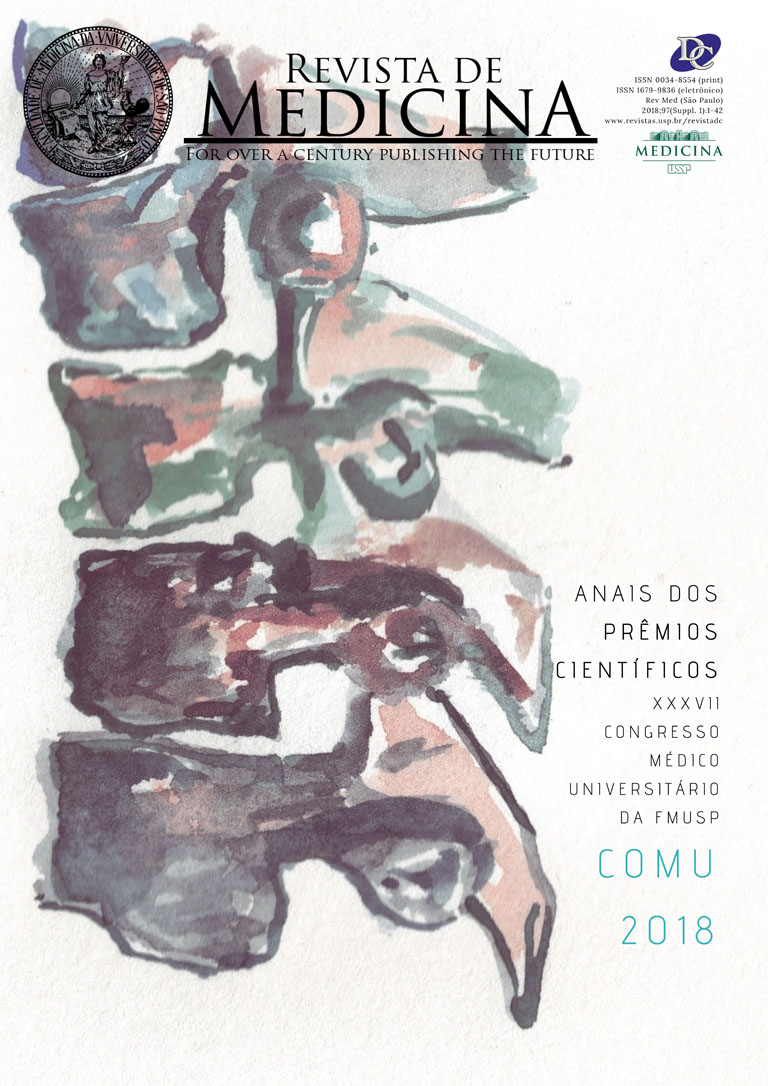Anti-EGFR reduces malignant pleural effusion and morbidity in experimental model of adenocarcinoma
DOI:
https://doi.org/10.11606/issn.1679-9836.v97iSuppl.1p17-18Palavras-chave:
Adenocarcinoma, Morbidade, Modelo experimental, Derrame Pleural Maligno, Anticorpos MonoclonaisResumo
Introduction: A lot patients with lung cancer develop pleural effusion in an advanced stage of the disease, with high morbidity and mortality. The pathogenesis of the malignant pleural effusion is not well known and the therapeutic options are limited. Currently target therapy, like the antibody anti-EGFR, is been used more often in the treatment of the lung cancer. The EGFR is a tyrosine-kinase receptor considered oncogenic and responsible for the growing, the survival, the proliferation and the differentiation of loads of cell types. The use of antibodies anti-EGFR may entail positive effects in the fight against the tumor and the effects of the malignant pleural effusion. Goals: To evaluate the effects of intrapleural therapy with anti-EGFR in experimental model of malignant pleural effusion. Material e Methods: This study received the approval of the Comitê de Ética no Uso de Animais (CEUA) from HCFMUSP. Sixty C57BL/6 mice received intrapleural injection of 0,5x105 Lewis Lung Carcinoma (LLC) cells. The animals were divided in two groups that received the intrapleural injection with anti-EGFR or PBS (No treatment/Control) after 3, 7, 10 and 14 days from the induction of the pleural neoplasia. Ten animals from each group were observed until their death to evaluate a survival graphic curve. Forty animals were submitted to euthanasia after 7, 10, 14 or 21 days. We evaluated the weight gain or loss in grams (g), the mobility (score 0-3), the volume of recovered pleural effusion in milliliters (mL), and the presence of tumor in in the pleura, the pericardium, the inflammatory cells of the lungs and the histological changes in the kidneys, liver and spleen. Tumor apoptosis (TUNEL) and proliferation (PCNA) were evaluated by scores (0-4). Statistical analysis: One Way ANOVA, Kaplan-Meier, p <0,05. Results: On the survival analysis we did not observe any statistical difference between the groups. The mice weight loss was observed in all the groups after 21 days. It was observed a better mobility in the groups that receives the anti-EGFR treatment. The pleural effusion volume was higher in the control group during all the study. The presence of pleural tumor implants was higher in the control group in comparison to the group that received treatment after 14 days. Pulmonary inflammation was discreet in all groups. The histological evaluation of the pericardium and the cardiac muscle showed tumor implants in the control group after 21 days. Hepatic and renal steatosis were more evident after 14 days in the control group. White flesh hyperplasia of the spleen was observed in all the periods of the study, especially in the 21st day in the control group. Higher levels of apoptosis and lower levels of tumor proliferation were observed in the groups that received treatment with anti-EGFR. Conclusions: In this experimental model, although it did not showed any benefic change in the animals survival, the target therapy with anti-EGFR reduced the pleural effusion volume, the morbidity and showed good histological parameters.
Downloads
Downloads
Publicado
Edição
Seção
Licença
Copyright (c) 2018 Revista de Medicina (São Paulo)

Este trabalho está licenciado sob uma licença Creative Commons Attribution-ShareAlike 4.0 International License.




